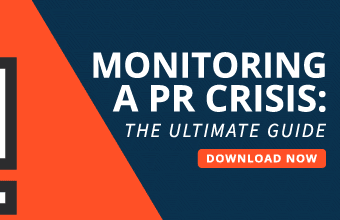In today’s fast-paced digital age, where information travels at lightning speed, and the world never sleeps, reputation management has become a critical concern for organizations across the board. As communication professionals, we are tasked with navigating the increasingly complex terrain of crisis communications in the digital era.
This article delves into the challenges posed by the digital age and offers sophisticated insights and solutions for effectively managing reputation during times of crisis.
The digital age dilemma
The digital age has made crisis communication more challenging, but it has also made it more important. Organizations unprepared for a crisis risk damaging their reputation and losing business.
Organizations face several challenges regarding crisis communication in the digital age. The following are the most critical:
1. The lightning-fast spread of information
In the digital age, the speed at which information travels has reached unprecedented levels. Within seconds, a single tweet, a controversial post, or an incriminating video can ignite a firestorm of attention that threatens an organization’s reputation.
Organizations must respond to crises quickly, as negative comments, rumors, and product issues can quickly escalate into full-blown reputation crises.
Communicators must proactively monitor online channels for mentions of their organization, products, or services. Social media, forums, review sites, and news outlets are all potential battlegrounds for reputation management.
Proactive monitoring is about early detection. Communicators can respond swiftly to emerging issues by acknowledging them, expressing concern, and committing to investigating and addressing them.
2. Social media’s amplification of reputational threats
Social media has become a double-edged sword. On one hand, it provides an instantaneous platform for engagement and interaction with a vast audience.
On the other hand, it serves as a powerful amplifier of reputational threats.
Negative comments, misinformation, and trending hashtags can quickly lead to reputation crises on social media. Information spreads swiftly, and a single complaint can snowball into a PR nightmare.
Managing reputational threats on social media demands agility and skill. Communication professionals must monitor these platforms vigilantly, identify emerging issues, and respond with a well-thought-out strategy. Ignoring or mishandling social media threats can lead to public backlash and eroded trust.
3. The 24/7 news cycle
In today’s digital age, the news cycle operates without pause. Traditional media outlets, blogs, and citizen journalism platforms are perpetually hungry for content. This relentless cycle demands that communicators remain vigilant around the clock, ready to address crises as they arise.
Effective crisis management now requires a comprehensive crisis plan and a dedicated team trained to respond swiftly and decisively in the digital age, where news breaks at any moment and public scrutiny is relentless.
Moreover, crisis response plans should encompass various scenarios, ensuring that organizations are ready to adapt to different crises, from data breaches to product recalls.
4. Navigating online communities and influencers
Online communities and influencers wield immense power in shaping an organization’s reputation. Understanding the intricate dynamics of these digital spaces is paramount. Communicators must discern potential allies from adversaries and employ strategic engagement to manage reputation effectively.
Online communities can be a source of both support and criticism, so it’s important to participate and empathetically address concerns actively. Leverage technology like content management systems to ensure all bases are covered and streamline communication efforts. This approach can turn potential threats into opportunities for relationship-building.
Influencers can also have a significant impact on an organization’s image. Collaborating with the right influencers can align messaging with target audiences and amplify the positive aspects of a brand.
To navigate these digital landscapes successfully, communicators must monitor online sentiment, identify key players, and craft tailored approaches for each community or influencer.
Surefire strategies for effective crisis communications
The best way to handle crisis communication in the digital age is to have a plan before a crisis strikes. This plan should outline how the organization will communicate with its stakeholders during a crisis and its messaging. The plan should also include protocols for monitoring social media and responding to misinformation.
Here are some key tips for crisis communication in the digital age:
1. Respond promptly and candidly
In a crisis, time is of the essence. Waiting until you have all the answers can breed uncertainty and erode trust. Instead, communicate promptly, conveying what you know and what remains uncertain. Swift responses, even if preliminary, demonstrate your commitment to transparency and concern for stakeholders. Timely information can also help manage public expectations, reducing anxiety.
According to Alex Klar from Apptimizer says, “acknowledging the issue as soon as possible and providing transparent updates to keep stakeholders informed. Additionally, utilizing social media platforms effectively can help spread reliable information and address concerns in real-time, allowing for a more proactive approach to crisis communication.”
Imagine a food manufacturer discovers a potential contamination issue in one of its products. Instead of waiting for conclusive test results, the company immediately issues a public statement acknowledging the possible problem. This timely move is to reassure consumers that their safety is a top priority and you commit to a swift investigation.
2. Embrace transparency and accountability
Transparency is paramount in crisis communication. When an organization admits fault or shortcomings, it humanizes the brand and fosters trust. Acknowledging mistakes and taking ownership of actions, whether a product recall or a service disruption, illustrates integrity. Stakeholders appreciate authentic brands—organizations that don’t evade responsibility and focus on solutions and improvements.
In 2013, Target suffered a major data breach that affected millions of customers. The company responded quickly and transparently, communicating with customers about the breach and taking steps to protect their data. Target also offered customers free credit monitoring and identity theft protection services.
When the ride-sharing giant Uber faced a data breach in 2016, it exemplified transparency by admitting the company had paid hackers to keep it quiet. Uber’s CEO’s public apology and pledge to take necessary steps to enhance data security and data backup solutions set a precedent for other organizations facing similar breaches. Cyber resilience had to become the golden standard.
3. Maintain message consistency
Brand consistency is the linchpin of effective communication during a crisis. Ensuring your website, social media profiles, and press releases convey a uniform message prevents confusion and builds credibility. Contradictory information, on the other hand, can exacerbate the crisis and erode trust. Establish clear internal communication protocols to maintain message alignment across all channels.
During the COVID-19 pandemic, the World Health Organization (WHO) provided consistent information across its official website, social media channels, and press releases. This uniformity reassured the public, eliminated confusion, and bolstered the organization’s credibility as the primary source of reliable pandemic information.
4. Harness social media for real-time engagement
Social media’s real-time nature makes it indispensable in crisis management. It serves as both a listening post and a direct line of communication with stakeholders. Monitoring social media enables organizations to analyze sentiment, identify emerging issues, and respond promptly. Engaging with concerned parties through these platforms demonstrates your commitment to addressing their needs and concerns.
The CEO of Boomcycle Digital Marketing, David Victor, says — “leveraging social media platforms empowers organizations to communicate broadly and effectively. It isn’t just about posting; it’s about listening and correcting. When false info pops up, we can see where it’s coming from, talk to those folks, and get their take on our brand. This can be invaluable feedback. Acting fast means we fix small issues before they get big.”
For example, Southwest Airlines used Twitter to communicate with affected passengers when the airline industry faced widespread flight cancellations due to a natural disaster. They provided real-time updates on flight statuses rebooking options, and addressed customer concerns promptly. This proactive approach helped mitigate passenger frustration and maintain a positive brand image.
In 2015, Chipotle experienced a series of foodborne illness outbreaks. The company responded quickly and honestly, communicating with customers about the outbreaks and taking steps to prevent them from happening again. Aside from agreeing to pay the $25 million fine, Chipotle also used social media to keep customers informed and to answer their questions.
5. Be ready to apologize and make amends
Apologizing is not a sign of weakness but a display of responsibility and commitment to rectifying errors. When an organization errs, a genuine apology can defuse tension and open the door to rebuilding trust. Beyond apologies, taking concrete steps to rectify the situation and prevent future occurrences shows stakeholders that you prioritize their well-being over pride or profit.

Source: J&J
Johnson & Johnson’s response to the Tylenol tampering crisis in the 1980s remains a gold standard for crisis management. When seven people died after ingesting cyanide-laced Tylenol capsules, the company immediately recalled 31 million bottles and publicly apologized. They implemented tamper-evident packaging, setting industry safety standards and restoring consumer trust.
In 2017, United Airlines generated a firestorm of negative publicity when a passenger was dragged off an overbooked flight. The company initially mishandled the situation but apologized and improved its customer service. United Airlines also used social media to apologize to the passengers and to explain its new policies.
Crisis communication in the digital age: A call to action
Crisis communication is more important than ever before in the digital age. Organizations unprepared for a crisis risk damaging their reputation and losing business.
The best way to handle crisis communication in the digital age is to have a plan before a crisis strikes. This plan should outline how the organization will communicate with its stakeholders during a crisis and its messaging. The plan should also include protocols for monitoring social media and responding to misinformation.








